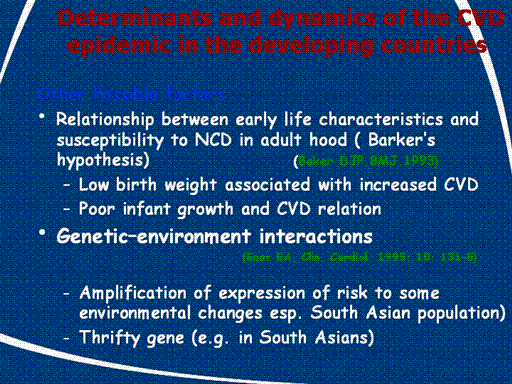| front |1 |2 |3 |4 |5 |6 |7 |8 |9 |10 |11 |12 |13 |14 |15 |16 |17 |18 |19 |20 |review |
 |
There are also possible
adverse effects of poor childhood nutrition
Ref: Barker DJP, Martyn CN,
Osmond C, et al. Growth in utero and serum cholesterol
concentrations in adult life. Br. Med J. 1993; 307: 1524–7
The possibility of such
programming, or as yet unascertained genetic factors, may underlie the
enhanced susceptibility of some ethnic groups (e.g. South Asian
migrants) to CHD
Ref: Enas EA, Mehta J.
Malignant coronary artery disease in young Asian Indians. Thoughts on
pathogenesis, prevention and therapy. Clin. Cardiol. 1995; 18: 131–5.
Such genetic environmental
interactions may need to be clarified in the varied ethnocultural
populations of the developing countries so that the relevant
environmental interventions could be preferentially promoted for CVD
prevention
|